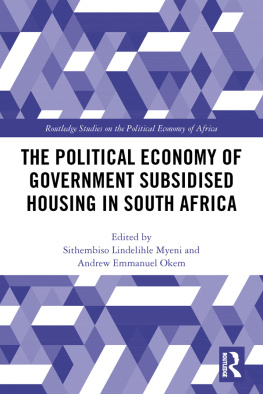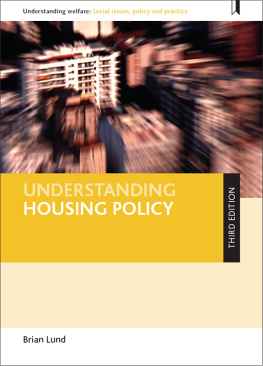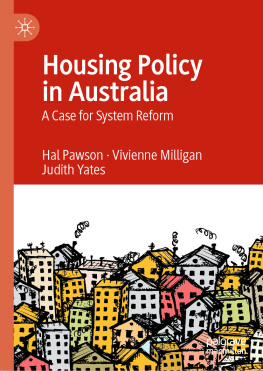First published in 1978 by Croom Helm Ltd
This edition first published in 2021
by Routledge
2 Park Square, Milton Park, Abingdon, Oxon OX14 4RN
and by Routledge
52 Vanderbilt Avenue, New York, NY 10017
Routledge is an imprint of the Taylor & Francis Group, an informa business
1978 Bruce Headey
All rights reserved. No part of this book may be reprinted or reproduced or utilised in any form or by any electronic, mechanical, or other means, now known or hereafter invented, including photocopying and recording, or in any information storage or retrieval system, without permission in writing from the publishers.
Trademark notice: Product or corporate names may be trademarks or registered trademarks, and are used only for identification and explanation without intent to infringe.
British Library Cataloguing in Publication Data
A catalogue record for this book is available from the British Library
ISBN: 978-0-367-64519-9 (Set)
ISBN: 978-1-00-313856-3 (Set) (ebk)
ISBN: 978-0-367-68106-7 (Volume 9) (hbk)
ISBN: 978-1-00-313432-9 (Volume 9) (ebk)
Publishers Note
The publisher has gone to great lengths to ensure the quality of this reprint but points out that some imperfections in the original copies may be apparent.
Disclaimer
The publisher has made every effort to trace copyright holders and would welcome correspondence from those they have been unable to trace.
CONTENTS
List of Tables and Figures
Acknowledgements
Introduction
2. A Framework for Analysing Housing Policy
3. Housing Politics and Housing Conditions in Sweden
4. Swedish Policy: The Development of a Socialist Market
5. Housing Politics and Housing Conditions in the United Kingdom
6. British Policy: The Welfare Approach to Housing
7. Housing Politics and Housing Conditions in the United States
8. American Policy: Stimulating Private Enterprise
9. Sweden, UK, USA: Explaining Differences in Housing Policies and Housing Conditions
10. Housing Equity Problems and Possibilities of Reform
Appendix: Political Cost-Benefit Analysis
Tables
2.1 Incentives in the Housing Sector
2.2 Characteristic Sequence of Policy Development
3.1 Population, Per Cent Urban and Per Cent in Cities over 50,000 (Sweden)
3.2 Dwellings Built per Thousand Population and Per Cent GNP Invested in Housing (Sweden)
3.3 Size of Dwellings and Overcrowded Households: Selected Years (Sweden)
3.4 Characteristics of Swedish Dwellings
3.5 Fully Modern Housing by Social Group, 1958, 1968, 1974 (Sweden)
3.6 Ownership/Tenure by Occupational Studies, 1974 (Sweden)
3.7 Type of Dwelling by Occupational Status, 1974
3.8 Household Expenditure on Housing by Occupational Group, 1958, 1969 (Sweden)
3.9 Pro Social Democrat Interest Groups; Influences on Housing Policy 1930s-1970s (Sweden)
3.10 Pro Bourgeois Interest Groups: Influence on Housing Policy, 1930s-1970s (Sweden)
5.1 Income Groups by Tenure, 1974 (UK)
5.2 Dwellings by Tenure, 1950-73 (UK)
5.3 Building Rate: New Dwellings per Thousand Population (UK)
5.4 Slum Clearance, 1930-73: England and Wales
5.5 Size of Dwelling and Density of Occupation, 1921-71: England and Wales
5.6 Housing Quality: Possession of Amenities in England and Wales
5.7 Ownership of Consumer Durables by Income (UK)
5.8 Housing Expenditure by Income, 1974 (UK)
6.1 General and House Price Inflation, Mortgage Advances and the Incomes of Borrowers: UK
7.1 Housing Starts per Thousand Population and % GNP Invested in Housing (USA)
7.2 Households Living in Crowded Conditions by Race, 1940-70 (USA)
7.3 Households Living in Crowded Conditions, by income and Race, 1970 (USA)
7.4 Married Couples-without Their Own Dwellings, 1940-72 (USA)
7.5 Households Living in Sub-Standard Units by Income and Race: 1970 (USA)
7.6 Ownership of Consumer Durables, 1940-73 (USA)
7.7 FHA New Housing Costs and Values (USA)
7.8 A Taxonomy of Dangers in the Lower Class Home and Environs: (USA)
7.9 Housing Expenditures in Relation to Total Personal Consumption Expenditure, 1929-74 (USA)
7.10 Housing Expenditure as a Percentage of Total Expenditure by Income, 1960 (USA)
7.11 Rent/Income Ratios of Renters in US, 1960 and 1970
7.12 Tax Subsidies and Direct Subsidies to Households above and below Median Income, 1972 (USA)
7.13 Interest Groups Which Are Pro and Anti Liberal Housing Programmes, Classified According to Degree of Influence (USA)
8.1 Beneficiaries of FHA Programmes, 1965 (USA)
8.2 Distribution of Households Served by Rent Supplement, Low Rent Public Housing, Sections 235, 236, 502, Interest Credit, and 504, by Income Class, as of 31 December 1972 (USA)
10.1 Linkage between Ideological and Empirical Conceptions of Equity
10.2 Summary of Housing Proposals
A.1 Patterns of Support and Opposition Generated by Policy Programmes
Figures
3.1 Male Factory Worker, Married, 2 Children, Renting 3 Rooms + Kitchen: % Income for... (Sweden)
Anyone who writes a comparative study of public policy in three countries needs help. In preparing this book I have accumulated a lot of (still unrequited) debts. I was enabled to study Swedish housing policy at first hand thanks to Professor Olof Ruins invitation to lecture at the University of Stockholm. He and his colleagues Anders Mellbourn, Rune Premfors and Daniel Tarschys answered numerous questions and met requests for data cheerfully and skilfully. For their helpful comments on the Swedish chapters, I would also like to thank Thomas J. Anton of the University of Michigan, Elsie Holmstrm of of the University of Melbourne, Kjell Holmstrm and Eric Peterson of Yale University. The American research was mainly undertaken in the course of a year at the Institute of Public Policy Studies, University of Michigan. I would like to thank the director of the Institute, Jack L. Walker, for his friendly reception and for many interesting discussions about policy analysis. The faculty of the Institute and, in particular, Thomas J. Anton, Paul N. Courant and Robert J. Harris gave me the benefit of their considerable knowledge of, respectively, American housing politics, economics and law. The year in Michigan was financed by the American Council of Learned Societies and I am grateful to the Council and its director, Mr. Richard W. Downar.













